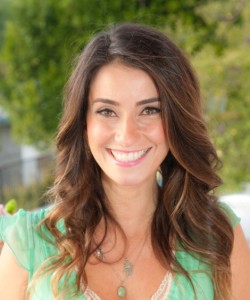
by admin
The Persian Problem
It has been more than three decades since the fall of the Shah, when tens of thousands of Iranian Jews fled their ancestral home for the freedom of the American West. Visit any sidewalk café on the streets of Beverly Hills and it is plain to see that this immigrant community has done well recreating their lives and their lot. But what happens when a community so deeply identified with a cultural past must reconcile itself to a strange, new future?
Two words: identity crisis.
Who are Iranian Jews, really? Are they quintessentially Iranian, with their teeming families, ritual quiddities and 3,000-year history? Are they Persian, their preferred title, since it denotes a rich cultural heritage and not the Iran of today, which is thoroughly Islamic and avowedly anti-Zionist? Are they — slowly, painfully, deliberately — becoming American? Or, is the community some hybrid-form of ancient/modern, eastern/western that doesn’t quite know what to call itself?
These are the questions with which the community is wrestling within and without, as a generation that never knew Iran and came of age in Beverly Hills tries to forge its own future. The conflicting strains of identity that comprise L.A.’s Persian Jewish community also provide ample fodder for the emerging Iranian-American literature of Los Angeles, a field dominated by women, whose voices have been given full volume in the new American world.
As Gina B. Nahai puts it in her soaring new work, The Luminous Heart of Jonah S., (Akashic, $17) “[W]riting seemed to be the weapon of choice for every bored Iranian housewife in New York and Los Angeles, it was not the kind of work self-respecting men willingly engaged in.”

Gina Nahai. Photo by Angela Nahai.
Despite the long tradition of Persian literature and poetry, modern Persians see writing as more of a trivial pursuit, far less lucrative than business or medicine, and therefore, easily relegated to the province of women — who have wisely seized upon it. The sharp-tongued Nahai, author of five novels, is the most prolific so far, closely followed by Dora Levy-Mossanen, who published her fourth book, Scent of Butterflies (Sourcebooks, $15) in 2014. Saba Soomekh is the scholar among them, a lecturer on religious studies and a graduate of Harvard Divinity School; her non-fiction book, From the Shahs to Los Angeles: Three Generations of Iranian Jewish Women Between Religion and Culture, (SUNY Press, $75) serves as an astute anthropological study.

Saba Soomekh. Photo by Brandon Wise.
Collectively, these women’s voices, their memories and their meanings, have come to define the L.A. Persian community and its problems. In mid-February, Nahai and Soomekh joined each other at Sinai Temple in Los Angeles for a dishy discussion that zeroed in on the community’s hot-button issues — among them, assimilation, an obsession with wealth and advantageous marriage, sexist sexual mores and a bitter sibling rivalry with their Ashkenazi neighbors.
“The question is,” Nahai wondered, “what do we do now that we’re here? Is it better to assimilate and become American or cling to at least some of the things we lost?”
The tension of tangled but proud identities is vivid in the new literature. In Scent of Butterflies, Levy-Mossanen’s heroine, Soraya, immediately announces herself as binary: “I am a rich woman from a backwards country…a Jewish woman from Iran.” We quickly learn that Soraya’s husband has betrayed her with her childhood best friend. Rather than endure the humiliation of staying in her marriage, Soraya absconds to Los Angeles, which she views not as a paradise of palm trees, but a place of exile. In her eyes, L.A. is far less sensuous than Iran, with “terrain as flat and foreign as a stranger’s palm.”
Angry and embittered, Soraya attempts to rebuild her life — in Bel Air, of course — by reclaiming the hobbies she left behind. As memories both beautiful and bitter wash over her, Soraya bides her time gardening, harvesting butterflies and taking photographs, finding comfort in the Persian belief in magic (sometimes practicing voo-doo-like destruction on pictures of those who betrayed her). Her personal exile mirrors the more familiar political one. With the help of curses, odd cures, superstitions, signs from the dead and the dark power of the evil eye, Soraya clings to the magical belief that as exile and ex-wife “the victim always ends up triumphant.”
Nahai’s book, by contrast, opens with the main character, dead. In a sweeping epic of melodrama and magical realism, Nahai gives us one family’s story, spanning two continents and three generations. It is a portrait of a community in full, and how all the interlocking figures that make up today’s Persian village-within-a-city somehow fall short of their deepest aspirations — that is, to return to a time gone by, a place no longer theirs.
Nahai holds nothing back in her trenchant assessment of the ensuing “American” (read: Ashkenazi) response to these immigrant intruders. When learning of the death of one extravagant Iranian: “The Americans who called wished to express… their abiding resentment of the entire [Iranian] community for being bold enough to live in the most desirable neighborhoods of Los Angeles, send their children to the most competitive schools, and excel in the most difficult and lucrative professions while, at the same time, keeping mostly to themselves and each other, speaking Persian everywhere they went, and insisting that their children marry other Iranians. It was simply too cheeky, too unimmigrant-like, for these Eye-ray-nians to be living next door to and eating in the same establishments as the icons and avatars of American culture.”
Nahai’s blistering criticisms of Persian envy and resentment are evident on many pages. But she also turns her gaze backward — on history — and inward, onto the community itself, telling a story of immigrant isolation and alienation even through survival and triumph.
Here is a community blessed and cursed, that feels itself strongly superior to its neighbors and yet equally insecure, that is intimate and insular, and yet, even among kin, deeply discriminating. It is what cultural anthropologists might refer to as a “shame culture,” in which the means of preserving the social order is inculcated through shame and the threat of ostracism. In other words, conform to communal values and you will be loved; break with tradition and face the dangers of the evil eye.
Shame can be strong, but in a country where the lure of individualism is so deeply ingrained, even the most powerful cultural patterns begin to give way. How, then, does a young Persian Jew maintain their distinctiveness without becoming — God forbid — a bland American?
“For a 25-year old, the challenge is trying to form a hybrid identity,” Soomekh said, during the discussion at Sinai Temple. “How do they form themselves within a community that is so insular, where there is love and support, but also 100 people telling you what to do? I don’t think the word boundary exists in the Farsi language.”
“I think younger people feel they have to choose,” Nahai said, “between being embraced by the community and their own independence.”
Both women agreed that change begins in the family — and that many of the most powerful cultural values are transmitted through mothers, who set the social calendar and determine what ways of life are acceptable for their children. It is the women who raise boys who are permitted to do “whatever they want,” Soomekh said, and at the same time, insist that their daughters remain najeeb — “pure and virginal.”
Indeed, it is also the women characters in their novels that steer the course of action, who are the risk-takers, sorcerers, soothsayers, soul-changers and survivors.
“Women [in the Persian community] need to develop their minds and start thinking outside the box,” Nahai said. “And re-evaluate their values, and not raise children that will speak with a Persian accent and get married at 27, and not think wealth is the only calling card.
“Home has a lot to do with that,” she concluded. “Men leave [to go to work]; that’s up to the women.”
Danielle Berrin is an award-winning columnist for the Los Angeles Jewish Journal. She writes the Hollywood Jew blog for jewishjournal.com.